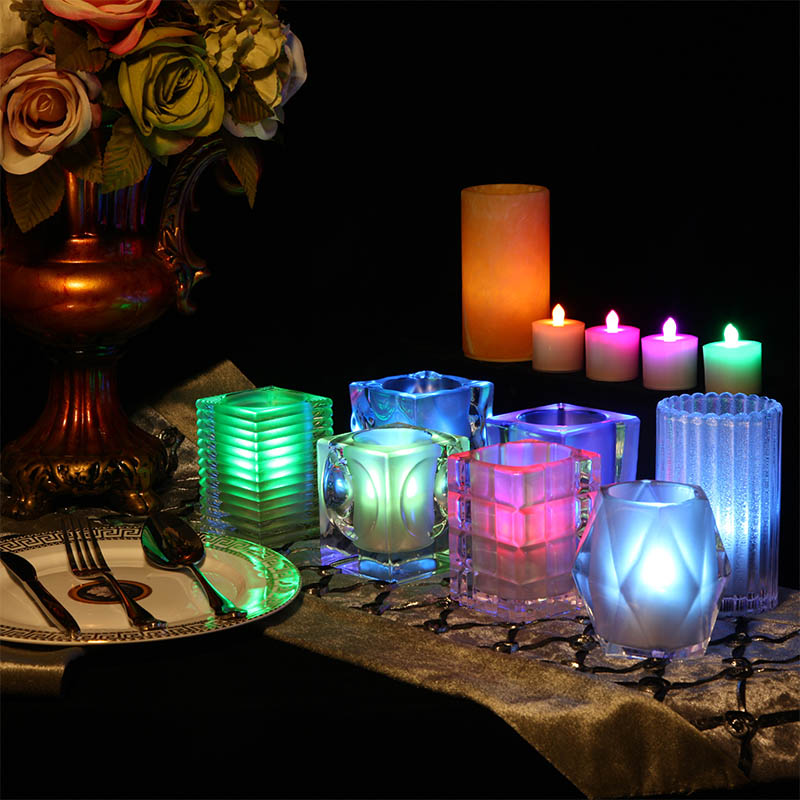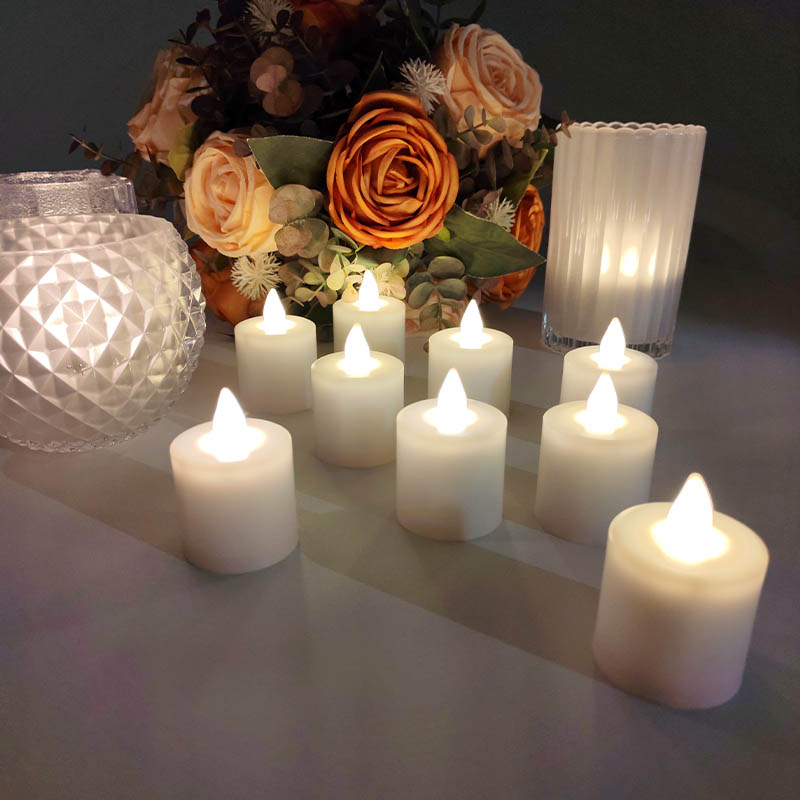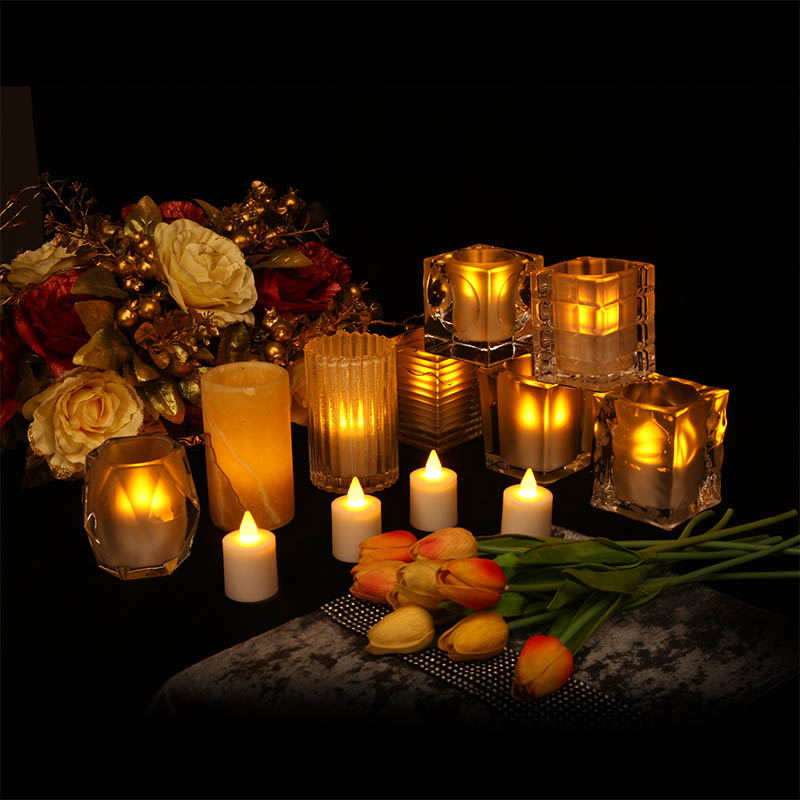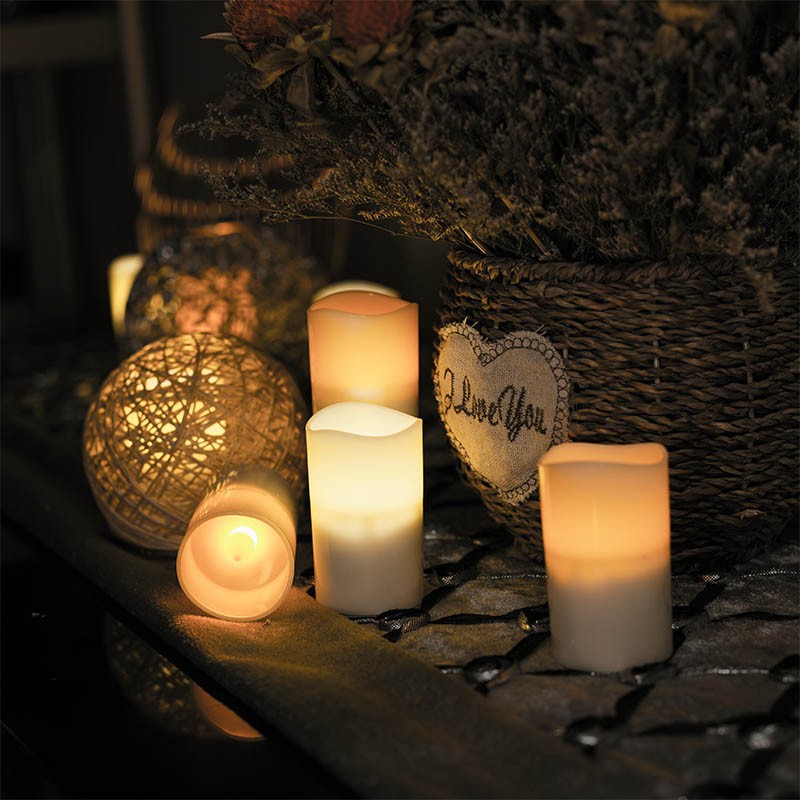How long can a magnetic rechargeable tealight maintain stable illumination in continuous use?
Release Time : 2025-10-01
In high-end restaurants, boutique hotels, wedding banquets, and themed dining spaces, lighting is more than just a tool; it's a key element in creating atmosphere and enhancing the customer experience. In recent years, magnetic rechargeable tealights, thanks to their safety, aesthetics, and intelligence, have gradually replaced traditional candles and become a new favorite in modern restaurant lighting.
1. Technical Foundations of Battery Life
The lighting duration of a magnetic rechargeable tealight depends primarily on three key factors: battery capacity, LED power consumption, and the energy consumption characteristics of the flickering mode. Currently, mainstream products use high-energy-density lithium-polymer batteries with capacities typically between 500mAh and 1200mAh. The light source utilizes low-power, high-color-rendering LED chips, operating at extremely low current. However, the key to battery life lies in the "Realistic Candle Flicker" feature. This technology uses a microcontroller to simulate the irregular movement, fading, and swaying of a real flame, creating a warm, natural, and vibrant light effect. While flickering mode offers a more dynamic aesthetic than constant-brightness lighting, its average power consumption is slightly higher than that of constant-bright mode due to the frequent on-off and dimming of the LED. However, thanks to advanced PWM technology and energy-saving algorithms, modern magnetic tea lights are able to maintain a highly realistic flame effect while keeping energy consumption extremely low.
2. Actual Battery Life: From 4 to 40 Hours
Based on testing data from leading market products, under continuous use with "realistic candle flickering" mode enabled, magnetic rechargeable tealights typically offer a lighting duration between 8 and 20 hours, with some high-performance models exceeding 25 hours. This battery life means restaurants only need to charge their tealights daily before opening to ensure worry-free lighting throughout the night, eliminating the need for mid-day replacement or recharging. This significantly enhances service efficiency and customer immersion.
3. Variables Affecting Battery Life
While nominal battery life is a guideline, actual usage is affected by a variety of factors. Firstly, the brightness setting is a key variable. Most tea lights support multiple dimming levels. High-brightness mode produces brighter flashes, but battery life is reduced accordingly. Low-brightness mode, on the other hand, produces a softer light but significantly extends battery life. Furthermore, ambient temperature can also affect battery performance. Extremely high or low temperatures can reduce battery efficiency and shorten battery life. Frequency of use and charging habits are equally important. Frequent deep discharges accelerate battery aging. It is recommended to charge the battery when the battery is approximately 20% full to extend its cycle life.
4. How Magnetic Charging Can Optimize Usage Processes
Magnetic charging technology not only improves safety and convenience but also indirectly ensures continuous lighting. Waiters can quickly charge multiple tea lights simultaneously using a dedicated charging tray or built-in dock, fully charging in 30-90 minutes. The charging process is spark-free and suitable for tables made of flammable materials such as wood and fabric. Many hotels utilize a "rotation system": while one group of tea lights is in use, another group is charging backstage, ensuring seamless operation and sufficient lighting for every reception.
When activated in realistic candle flickering mode, the magnetic rechargeable tealight typically provides 8 to 24 hours of continuous, stable lighting, fully meeting the daily operational needs of restaurants and hotels. Its long battery life, combined with fast charging, safety design, and highly realistic flame effects, not only recreates the romantic atmosphere of traditional candles but also addresses the safety risks of open flames, the tediousness of frequent candle changes, and smoke pollution through technological means.
1. Technical Foundations of Battery Life
The lighting duration of a magnetic rechargeable tealight depends primarily on three key factors: battery capacity, LED power consumption, and the energy consumption characteristics of the flickering mode. Currently, mainstream products use high-energy-density lithium-polymer batteries with capacities typically between 500mAh and 1200mAh. The light source utilizes low-power, high-color-rendering LED chips, operating at extremely low current. However, the key to battery life lies in the "Realistic Candle Flicker" feature. This technology uses a microcontroller to simulate the irregular movement, fading, and swaying of a real flame, creating a warm, natural, and vibrant light effect. While flickering mode offers a more dynamic aesthetic than constant-brightness lighting, its average power consumption is slightly higher than that of constant-bright mode due to the frequent on-off and dimming of the LED. However, thanks to advanced PWM technology and energy-saving algorithms, modern magnetic tea lights are able to maintain a highly realistic flame effect while keeping energy consumption extremely low.
2. Actual Battery Life: From 4 to 40 Hours
Based on testing data from leading market products, under continuous use with "realistic candle flickering" mode enabled, magnetic rechargeable tealights typically offer a lighting duration between 8 and 20 hours, with some high-performance models exceeding 25 hours. This battery life means restaurants only need to charge their tealights daily before opening to ensure worry-free lighting throughout the night, eliminating the need for mid-day replacement or recharging. This significantly enhances service efficiency and customer immersion.
3. Variables Affecting Battery Life
While nominal battery life is a guideline, actual usage is affected by a variety of factors. Firstly, the brightness setting is a key variable. Most tea lights support multiple dimming levels. High-brightness mode produces brighter flashes, but battery life is reduced accordingly. Low-brightness mode, on the other hand, produces a softer light but significantly extends battery life. Furthermore, ambient temperature can also affect battery performance. Extremely high or low temperatures can reduce battery efficiency and shorten battery life. Frequency of use and charging habits are equally important. Frequent deep discharges accelerate battery aging. It is recommended to charge the battery when the battery is approximately 20% full to extend its cycle life.
4. How Magnetic Charging Can Optimize Usage Processes
Magnetic charging technology not only improves safety and convenience but also indirectly ensures continuous lighting. Waiters can quickly charge multiple tea lights simultaneously using a dedicated charging tray or built-in dock, fully charging in 30-90 minutes. The charging process is spark-free and suitable for tables made of flammable materials such as wood and fabric. Many hotels utilize a "rotation system": while one group of tea lights is in use, another group is charging backstage, ensuring seamless operation and sufficient lighting for every reception.
When activated in realistic candle flickering mode, the magnetic rechargeable tealight typically provides 8 to 24 hours of continuous, stable lighting, fully meeting the daily operational needs of restaurants and hotels. Its long battery life, combined with fast charging, safety design, and highly realistic flame effects, not only recreates the romantic atmosphere of traditional candles but also addresses the safety risks of open flames, the tediousness of frequent candle changes, and smoke pollution through technological means.










